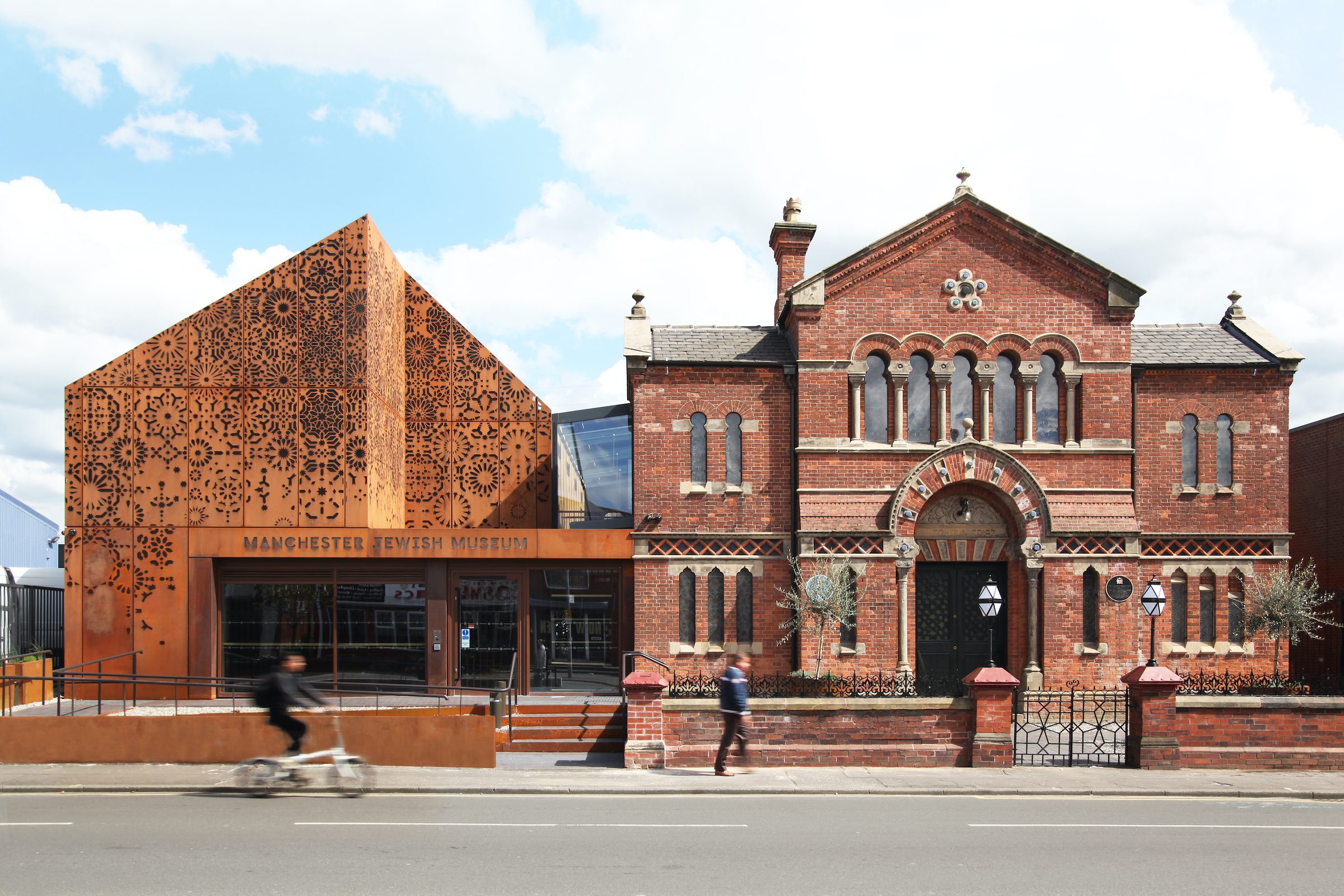With genuine community engagement embedded in the design process, Citizens Design Bureau has carried out a sensitive refurbishment and extension of Manchester’s Jewish Museum. New Architecture Writers Nyima Murry and Lela Sujani speak to practice director Katy Marks ahead of the opening.
Somewhat removed from the civic centre of Manchester, the new Jewish Museum on Cheetham Hill Road is a surprising location for new-comers to the area. Next to a busy road, surrounded by industrial warehouses from Manchester’s former thriving textile industry, Citizen Design Bureau was tasked with the challenge of creating a space that serves both the local Jewish community as well as welcoming a wide range of visitors.
The project is centred around the restoration of the listed synagogue. But Katy Marks, head of Citizens Design Bureau, describes the former religious space as “an artefact within the museum” rather than a central space for a faith museum. The community’s history is woven into this refurbishment through the preservation of elements of the synagogue’s Jewish Orthodox tradition. “Every space had to have a story to tell,” she says. “Working on a tight budget, it was about the little details, everything has to do more than one thing almost.”
With the deliberate absence of a main gallery, the new perforated Corten extension connects with the synagogue through a light corridor. Internally, the exhibits are curated thematically – moving from ‘journey’, to ‘community’ to ‘identity’. In doing so, the design attempts to respond to the challenge of recognising both the diversity of the Jewish community, as well as the diversity of migrant identity within Cheetham Hill and wider Manchester.
“Real people’s stories are conflicting sometimes. They are messy. They don’t fit a particular narrative necessarily,” says Mark. “We felt that if both the collection, and the architecture just tell stories that are real, there is a broadness that means people feel invited into that and able to contribute their own stories as well.” While balancing this ambition to achieve ‘broadness’, Citizen Design Bureaus’ own ethos can be witnessed in subtle interventions like the prioritised access through the women’s section of the synagogue to enter the museum.


It was refreshing to speak with a practice that has gone beyond the arch-jargon and tick-box exercise of community engagement within the design process. “What we’ve found with our process is that actually engaging with the community makes it far easier down the line. If you involve the community then they are on board,” says Mark. “It was challenging of course, but it matters that we explicitly went out and directly invited people to hear their voices.”
Bagel making workshops, ‘synagigs’, inter-faith embroidery groups, acting out the space with school children and even mapping the museum out in snow were just some of the less conventional ways the practice worked with the community to create this multifunctional space. With the restored synagogue now acting as an events space (drawing on Marks’ experience in designing theatre and arts spaces at Haworth Thompkins) sitting alongside the museum and cafe, the Jewish Museum refers to itself as the ‘living room of Cheetham Hill.’
The perforated Corten steel facade references the geographic origins of the Sephardi Jews from Spain, Portugal and North Africa that built the synagogue in 1874. It successfully distinguishes the new building from its tired neighbours, but this new feature is possibly the least exciting aspect of the project. Instead, the community space with an open-plan kitchen designed to host workshops, lessons and secular community events, captures the exciting ambition of the refurbishment.
After a year of museums retreating into themselves, only engaging with the public through limited digital archives, the Jewish Museum provokes the traditional idea of what a museums’ role in our city is. It is not solely an archival space with object based displays, but the spaces are also open for community use. In this way the museum is a capsule for sharing stories but also invites new stories to be created. Marks describes the building as having “a spirit of independence.” In a time where questions are being raised about decolonising museums, the collection of display items have all been donated by the Jewish community with agency over their own social and political histories. Through attempting to carry forward the sense of community space that the synagogue would have once offered, the museum straddles being both an archival space, and a community centre.
“I hope people see that this has been done in quite an unusual way for a museum. Even though it’s a small building, we’ve made everything rich,” says Marks. “Everything is laden with thoughts and ideas. It was a real treat of a project.”
Citizen Design Bureau has boldly risen to the challenge of a complicated project – ambitious in both its design and cultural programme, its success is derived from their commitment to community engagement as an integral part of the design process. As their debut completed project, this new space has a hopeful future as a key asset to the community.

























